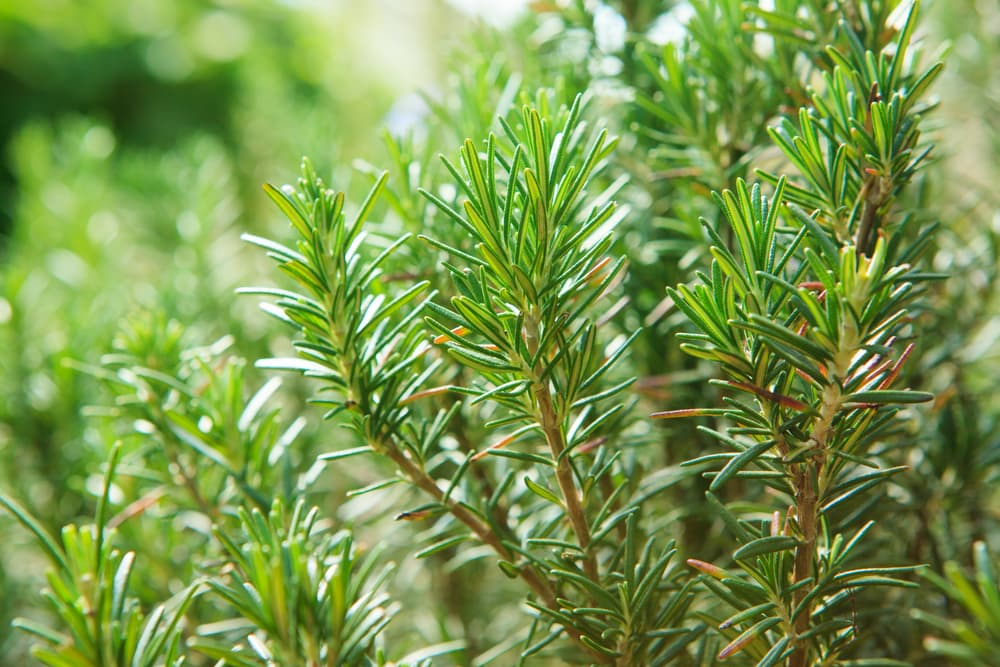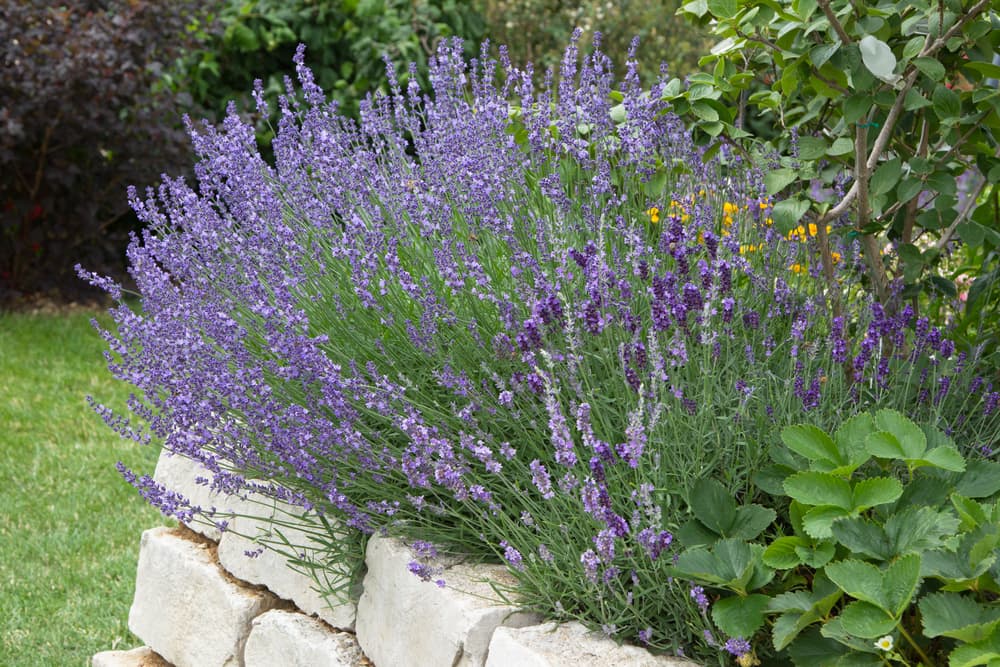The Herbs That Can Be Planted & Grow Well Together According To Edible Bristol


Elizabeth is a Permaculture Garden Designer, Sustainability Consultant and Professional Writer, working as an advocate for positive change. She graduated from the University of St. Andrews with an MA in English and Philosophy and obtained a Diploma in Applied Permaculture Design from the Permaculture Association.
Reviewed By PETER LICKORISH

Peter is a Horticulture Lecturer and self-employed Horticulturist, with a passion for diverse areas of the industry - from garden design to the science behind plant growth and propagation. He has completed the Royal Horticultural Society’s Master of Horticulture (MHort) Award and lectures on RHS courses at Bedford College.
Contributions From SARA VENN

Sara Venn is the founder and leader of Edible Bristol, an organisation set up to create edible gardens across the city of Bristol. With 60 gardens and counting, the project is still growing. Sara also has previous experience as a Horticulturist at various plant nurseries.

Kim Stoddart is a climate change gardener and the co-author of ‘The Climate Change Garden’, which was updated and republished in February 2023. She teaches courses for the RHS and has also written for publications such as The Guardian and Country Smallholding.
IN THIS GUIDE
- Considering Garden Conditions
- Mediterranean Herbs For Free-Draining, Sunny Conditions
- Herbs For Moister, Sunny Locations
- Herbs For Partial, Light Or Dappled Shade
- Growing as Wide a Range of Herbs as Possible
- What Is A Herb Spiral?
- How To Make A Herb Spiral Bed
- Planting Herbs In A Herb Spiral
- Herbs That Don’t Grow Well Together
- Companion Planting For Herbs
Growing herbs in your garden is an excellent idea but to get the best results, you need to understand which herbs grow well together and the conditions they each need.
When growing herbs in your garden, it is important to consider where exactly you should grow them.
One of the first things that you will need to decide is whether you will grow herbs among annual crops, in mixed perennial planting schemes, or with other herbs in a dedicated herb garden.
“I absolutely love growing herbs,” shares Kim Stoddart, the Climate Change Gardener.
“Not only do they provide the most delightful array of flavour options for cooking, these plants are hugely beneficial for wildlife and incredibly good for us to boot.”
As mentioned by Kim, herbs can be beneficial throughout your garden.
They can bring many benefits ecologically within a range of different planting schemes, for beneficial wildlife attraction and for pest control, for example.
“I grow a lot of herbs at home as I’m fascinated by them and their uses,” shares Edible Bristol’s founder Sara Venn.
Considering Garden Conditions

The main thing to remember when planning a dedicated herb garden, however, is that not all herbs will thrive in the same growing conditions.
In order to grow as many herbs as possible in a herb garden, you need to give careful consideration to their growing needs – you need to consider which herbs can be planted and grow well together, and which do not.
Remember, when we consider common herbs, there are herbs which prefer sunny, free-draining conditions, herbs that prefer sunny conditions but have higher moisture requirements, and herbs that can cope better in some shade.
By grouping herbs into these broad categories, you can determine where best to grow each herb, and which others should grow well alongside them.
Mediterranean Herbs For Free-Draining, Sunny Conditions
The first category to consider are Mediterranean herbs, which require sunny and free-draining conditions.
These are all great choices for a free-draining bed or border, dedicated herb garden (or container garden) in full sun, which is south or perhaps west-facing.
Common herbs which need these conditions and which will grow well together include:
1) Rosemary

2) Lavender

3) Thyme

4) Marjoram

5) Oregano

6) Sage (and other Salvias)

7) Tarragon

8) Summer / Winter Savory

9) Lemon Verbena

10) Catmint

11) Agastache

12) Echinacea

13) Yarrow

14) Mace

Herbs For Moister, Sunny Locations
Many other herbs also like full sun, and usually fairly free-draining soils or growing media, but prefer somewhat more moist growing conditions than the above.

Some examples of herbs of this type include:
1) Basil

2) Thai Basil

3) Coriander

4) Dill

5) Fennel

6) Lemon balm

7) Lemongrass

8) Borage

9) Chamomile

10) Feverfew

11) Chicory

12) Bergamot

13) Garlic Chives

14) Anise

15) Salad Burnet

16) Valerian

Herbs For Partial, Light Or Dappled Shade
Finally, there are those herbs which can thrive in partial, light or dappled shade. Here are some examples:
1) Mints

2) Parsley

3) Chervil

4) Comfrey

5) Angelica

6) Lovage

7) Sorrels

8) Marshmallow

9) Tansy

10) Rue

11) Alexanders

12) Meadowsweet

13) Good King Henry

14) Herb Patience

Among this list, Good King Henry is probably the best candidate for deep shade.
Of course, thinking about the amount of sunlight herbs require, and their soil and moisture preferences will help you narrow down your choices and determine where to grow each one, and where they will grow well alongside one other.
But whenever thinking about herbs to grow together, you also need to think about their root formation and growth habits, lifecycle and their specific characteristics and nutritional needs.
So categorising herbs in this way is just a starting point.
Growing as Wide a Range of Herbs as Possible
Thinking about sunlight and soil/moisture requirements can also give you a starting point for creating and planting up a herb garden that can cater to the needs of as many different plants as possible.
A simple, flat garden bed or planter could never provide optional conditions for all of the above.

If you wish to create a dedicated herb garden with as many different herbs planted in it as possible, and want to include herbs from all the above categories, then you will have to get a little inventive.
One interesting idea which allows you to grow herbs that would not usually thrive together in the same bed in as small an area as possible is the concept of a herb spiral.
What Is A Herb Spiral?

A herb spiral is a spiral-shaped 3D raised bed, which spirals down clockwise from the top to end at the base on the northern side.
Herb spirals are usually around 1m high, and 1-2m in diameter, though even a smaller spiral could be beneficial.
The idea behind this concept is that the spiral form creates a range of different growing conditions.
The very top has the driest conditions (and the most depth for longer roots), the southern side of the spiral is sunny, and increasingly moist towards the base.
And shady and moister conditions are created towards the base of the northern side.
How To Make A Herb Spiral Bed
There are a couple of different ways to make a herb spiral bed.
The first method involves using the principles of hugelkultur to create a circular mound, rather than a long bed, with rotting wood at its core, and layers of organic matter around the outside.
Topping this with soil or good quality compost, you can then decorate with stones or other natural materials to make a spiral form on this mound. Of course, this type of spiral bed will sink over time as the organic materials decompose.
You can also make a more permanent herb spiral by building up a spiral form structure with logs, stones, bricks, or other natural or reclaimed materials.
The walls of this structure (which are of course higher at the centre and lower towards the edges) are then filled with organic matter, compost or soil to create suitable growing conditions.
Planting Herbs In A Herb Spiral

Starting at the very top of the spiral, rosemary will appreciate the top position.
Next, will come other herbs for free-draining conditions – perhaps thyme, marjoram and oregano, for example.
On the sunny south side you might plant other common culinary herbs like basil, coriander and dill, and down and round to the less sunny sides, you may plant parsley and chervil.
Finally, round to the north at the base, you might place some chives.
Not all herbs will thrive in a herb spiral, and some may be too large or spreading for their inclusion to be a good idea.
However, making a herb spiral is one way to grow a range of culinary herbs together, even when they have somewhat different environmental needs.
Herbs That Don’t Grow Well Together
One herb that does not always ‘play well’ with other herbs is mint.
Mint
Mints (and other related plants) are very vigorous, and can quickly grow and spread, outcompeting their neighbouring herbs and taking over an area.
In some areas, mints’ ability to spread can be beneficial.

They can be used to create good ground cover in the dappled shade in a fruit tree guild or forest garden, for example.
But in a dedicated herb bed, they can be problematic.
If you do decide to place mint into a dedicated herb garden, such as a herb spiral, be sure to place them in a sunken pot, so they do not spread.
In a sunken pot, mint can be a good choice for the north and lower position in a herb spiral.
“It also gives the option to plant many different types of mint together, in a more organised fashion, such as pineapple mint and black peppermint,” adds Master Horticulturist Peter Lickorish.
Fennel
Another herb that does not allow other herbs nearby to thrive is fennel.
Fennel is a well known allelopathic plant – this means that it exudes chemicals that stunt or set back the growth of certain other plants close by.

Fennel does not have a negative effect on all neighbours, and there are plants that are not affected by having it close by.
But it is not usually a good idea to include fennel in a dedicated herb garden – though it is a good choice for your garden overall.
Fennel should also not be planted close to dill, because the two can cross-pollinate, which you do not want if you want to save the seeds.
You should also avoid sowing fennel close to coriander as the fennel can prevent coriander seeds from germinating, and the coriander can affect the germination of the fennel too.
Others
You should also avoid planting sage near alliums or common rue. And anecdotally, it is said to be best to avoid placing basil near rue or thyme.
And note that summer savory may delay the germination of certain other herbs.
Again, you can thank allelopathy.
Companion Planting For Herbs

Herbs obviously make excellent companion plants, aiding the growth and helping out a range of other plants.
But herbs themselves can benefit from companion plants, as well as helping other plants and wildlife in your garden.
“Gardeners are often fearful of planting large herbs in a space shared by smaller herbs,” shares Peter.
“However, this overlooks innovative options for taming large herbs, such as bay.
“Bay can be cloud pruned to form pom-poms of tight growth, contrasted against bare-stems.
“You can attempt a similar approach with plants such as rosemary, which can become straggly over time.
“Cloud pruning in late spring will allow these plants to filter light through and create useful dappled shade for growing other herbs.”
Here are some beneficial herb combinations to consider:
- Plant anise or chamomile with other aromatic herbs as this is said to increase essential oil production.
- Yarrow may also increase the essential oil production of some aromatic herbs.
- Coriander is said to aid anise.
- Though dill and fennel can cross pollinate, this can be a beneficial combination if you do not wish to collect the seeds.
- Lovage is said to be a ‘nurse plant’ which promotes the healthy growth of plants (including many other herbs) close by.
